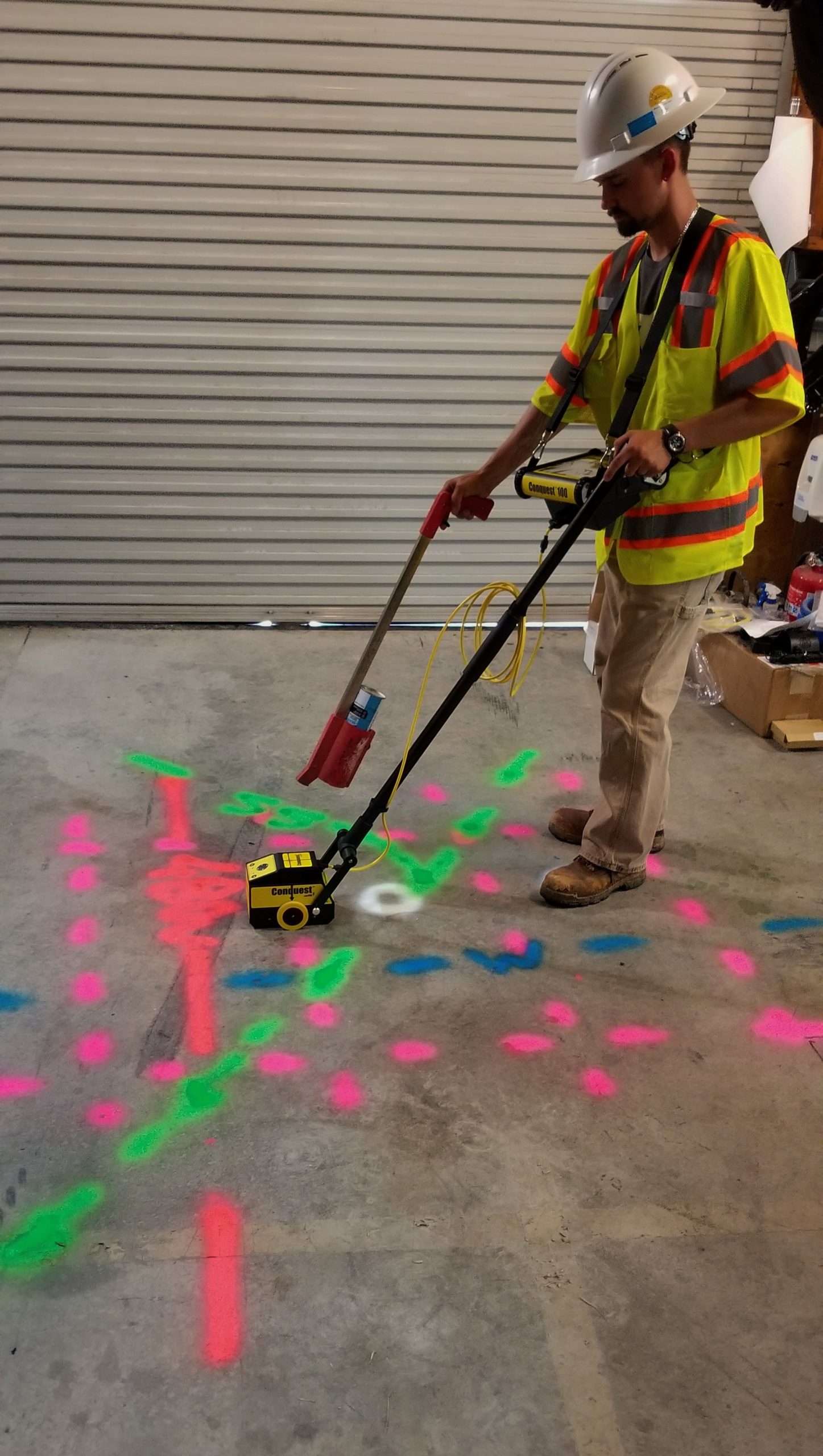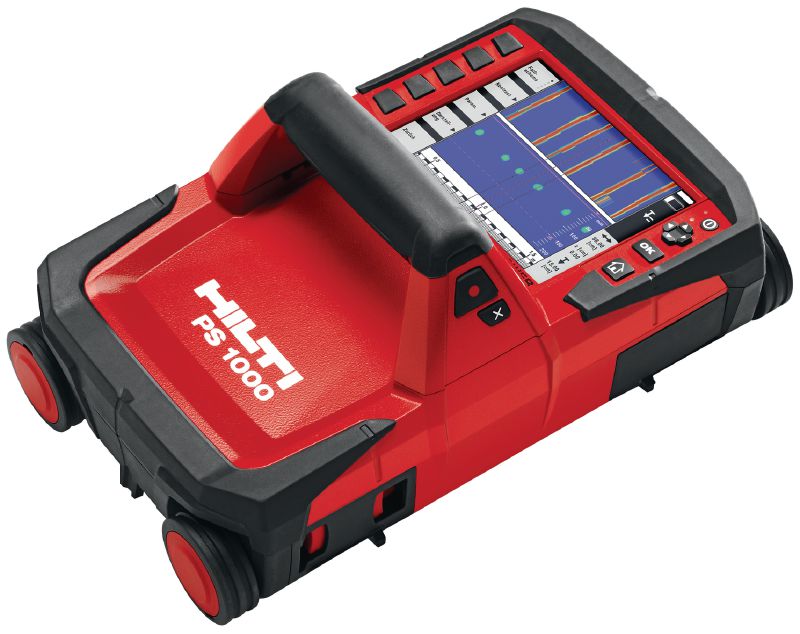RainierGPR Service Areas: Comprehensive Insurance Coverage for Concrete Scanning
RainierGPR Service Areas: Comprehensive Insurance Coverage for Concrete Scanning
Blog Article
Concrete Scanning: A Vital Action In The Direction Of Ensuring Architectural Stability and Security
In the realm of building and construction and framework upkeep, the value of concrete scanning can not be overstated. This careful process holds the vital to unveiling possible dangers concealed below the surface area of apparently solid structures. By utilizing advanced innovation and techniques, concrete scanning functions as a crucial tool in ensuring that the honesty and safety of bridges and buildings are promoted to the greatest criteria. Nonetheless, past its surface-level effects, the duty of concrete scanning extends far deeper than satisfies the eye.
Relevance of Concrete Scanning
Concrete scanning plays an important role in ensuring the architectural integrity and safety of buildings and infrastructure tasks. By using sophisticated modern technologies such as ground-penetrating radar (GPR) and electro-magnetic induction, specialists can non-destructively inspect concrete frameworks to discover prospective issues, voids, embedded items, and reinforcement design. This procedure enables early detection of anomalies that could endanger the stability of a structure, stopping pricey problems and guaranteeing the safety of passengers.
Concrete scanning is particularly important throughout the planning and construction phases of a project. Before exploration, reducing, or coring into concrete, scanning assists determine the specific areas of rebar, post-tension wires, and various other embedded components, minimizing the danger of unintended hits that could result in architectural weaknesses. Furthermore, concrete scanning help in quality assurance by verifying the density of concrete covers and discovering any type of inconsistencies that may influence the general sturdiness of the structure. Inevitably, buying concrete scanning services is not just a proactive measure to minimize threats but also a basic step towards maintaining the long-term safety and stability of buildings and infrastructure.
Technology for Concrete Assessment

Benefits of Very Early Detection
Prompt detection of structural concerns can substantially reduce risks and make sure the durability of building projects. By determining prospective troubles beforehand in the construction procedure, stakeholders can take aggressive measures to deal with concerns prior to they intensify into bigger and extra costly problems. One of the key advantages of early detection is the avoidance of structural failings, which can present significant security threats and bring about job delays and financial losses.
Furthermore, early detection enables for prompt repair work and upkeep, which can help extend the lifespan of the framework. Read Full Report By attending to problems promptly, building and construction teams can prevent pricey repair services or even the need for early replacement of structural components. This positive strategy not just saves money and time but likewise boosts the overall safety and toughness of the building and construction job.
Additionally, very early detection can improve job preparation and decision-making by supplying stakeholders with valuable understandings right into the condition of the structure. Armed with this information, job supervisors can make informed choices pertaining to building materials, timelines, and methods, causing more successful and efficient job results.
Making Sure Architectural Security
Guaranteeing the structural stability of a building and construction project is extremely important to its safety and security and durability. Structural stability refers to the ability of a structure or infrastructure to preserve its type and function under environmental problems and different lots. click for source To accomplish this, complete evaluation and tracking of the framework are important. Concrete scanning plays a critical role in guaranteeing structural security by identifying prospective problems such as gaps, delamination, or support corrosion that can endanger the stability of the framework in time.
By utilizing innovative scanning innovations like ground-penetrating radar (GPR) and electro-magnetic induction, construction specialists can non-invasively check concrete structures to recognize locations of concern underneath the surface. This proactive strategy enables the early detection of defects or weak points, allowing punctual repair work or reinforcement to avoid architectural failures.
Normal concrete scanning throughout different building stages and throughout the life process of a framework can aid keep its security, alleviate threats, and make certain the security of owners. By focusing on architectural stability with concrete scanning, construction tasks can enhance their resilience and toughness, eventually contributing to higher security and longevity.

Protecting Against Critical Failings
To safeguard against catastrophic occasions, meticulous surveillance and aggressive maintenance are essential in preventing vital failings within architectural structures. Discovering potential concerns prior to they intensify is crucial to stopping architectural failings. Executing routine examinations, such as concrete scanning, can expose covert defects like spaces, fractures, or rust that can endanger the stability of a framework. By using sophisticated scanning modern technologies like Ground Passing through Radar (GPR) or Concrete X-ray, engineers can non-destructively examine the condition of concrete and determine weak factors that need reinforcement or repair - RainierGPR Service Areas.

Verdict
To conclude, concrete scanning plays an important role in ensuring structural honesty and safety by using innovative technology for very early discovery of potential problems. This proactive approach helps avoid essential failings and makes certain the security of frameworks. It is important to prioritize concrete assessment as a typical practice to secure the long life and safety of structures and infrastructure.
Concrete scanning plays a crucial duty in guaranteeing the architectural stability and security of structures and infrastructure tasks. Furthermore, concrete scanning aids in top quality control by confirming the thickness of concrete covers and identifying any type of inconsistencies that might influence the total sturdiness of the framework. Concrete scanning plays an important function in guaranteeing architectural security by detecting read possible issues such as spaces, delamination, or support rust that might compromise the integrity of the framework over time.

In conclusion, concrete scanning plays an essential function in ensuring structural integrity and safety and security by using innovative innovation for early detection of potential issues.
Report this page